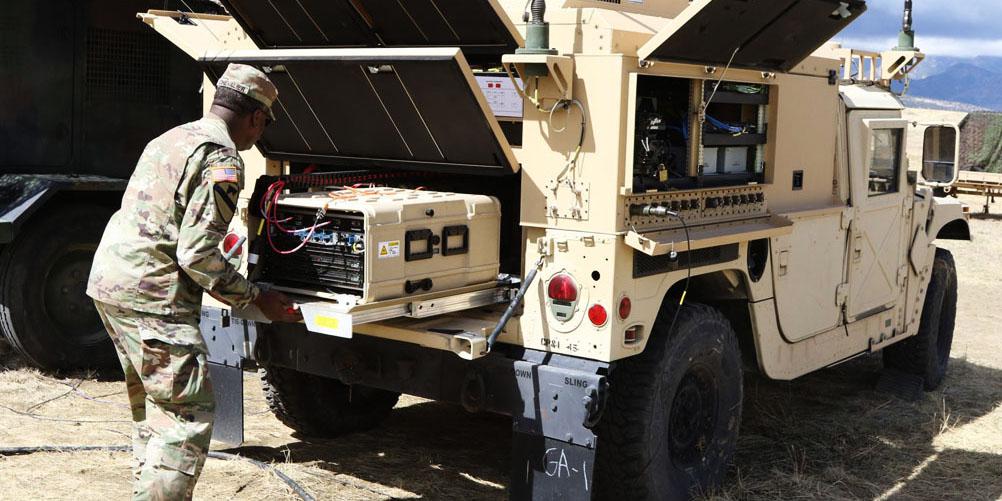CERDEC Rolls Out Innovation
The division at the U.S Army’s Communications-Electronics Research, Development and Engineering Center (CERDEC) that covers Expeditionary Mission Command (EMC) technologies has been busy. It has completed the development of more than 15 projects as part of its science and technology objectives.
The EMC Science and Technology Objective (STO) projects cut across command, control, communications, computers, intelligence, surveillance and reconnaissance (C4ISR) technologies. The developed capabilities are now transitioning out of CERDEC to Army program of record partners under six transition agreements. EMC scientists, engineers and soldiers unveiled the projects at EMC’s capstone demonstration on July 18 at Aberdeen Proving Ground, Maryland.
“The EMC STO is a culmination of a three-year effort,” said Lisa Heidelberg, division chief, Mission Command Capabilities, EMC, CERDEC.
Tyler Barton, manager, EMC STO-D, explained that the projects will help fill key C4ISR-related gaps, and provide the Army more expeditionary maneuverability and uninterrupted mission command capabilities. "When we began this effort three years ago, we were studying up on new Army doctrine on mission command network and command post infrastructure,” Barton said. “All of this pointed out some of the challenges and problems the current Army and command post mission nodes had. We were much too vulnerable, the command posts were too large and too much equipment had to be towed around. It all required too much to sustain and too much fuel.”
Edric Thompson, CERDEC Public Affairs, added, “The story here is really mission command. It’s a soft science so people don’t always really get it like bullets, but it is one of the most important things that you can have out on the battlefield. These [technologies] are to enable the commander.”
The new capabilities include improvements and innovations to command post computing platforms: the Command Post Platform (Improved) (CPP(I)); Tactical Computing Environment (TCE); Expeditionary-Joint Battle Command-Platform (X-JBC-P); and Single, Multimodal, Android Service for Human-Computer Interaction (SMASH).
The EMC also worked to develop shelters and command post structures to support the various computing environments and operations, including the Ultra Light Command Post (IL CPN), Light-Mobile Command Post (L-MCP) and Expeditionary Command Post (ExCP). The Display Viewer Application (DVA) and the Command Post Display System (CPDS) give soldiers a way to display and share information.
To meet the power needs of such intricate systems, CERDEC also developed and integrated power generation sources with power management capabilities as part of the Energy Informed Operations (EIO) project.
Stay tuned to SIGNAL Magazine for upcoming articles detailing the various capabilities the EMC has developed for the Army.





Comments